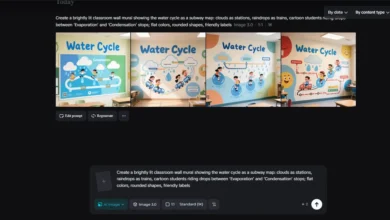
Struggling to keep up with the growing demand for seamless, high-quality video streaming? In today’s competitive digital landscape, businesses that fail to provide reliable and engaging streaming services risk losing customers to more tech-savvy competitors. Traditional delivery methods are no longer sufficient—audiences expect instant access to content across multiple devices, without interruptions or quality issues.
For businesses looking to capitalize on this market, understanding the technology behind video streaming is critical. From encoding to delivery, a streamlined process ensures exceptional user experiences while optimizing operational efficiency. This guide breaks down the key steps of video streaming and the technologies driving them, helping you build a robust foundation for your IPTV platform.
How Does Video Streaming Work?
Video streaming is a complicated process with several interconnected stages:
#1 Encoding
The journey begins with encoding. After a video is recorded or captured, it undergoes compression to reduce its size for easier storage and transmission over the Internet. This is achieved by breaking the video into smaller, manageable chunks, ensuring efficient delivery.
An IPTV encoder plays a crucial role here, handling file compression while maintaining high-quality playback with minimal latency. Modern encoders with high processing power are essential for flawless streaming experiences.
#2 Transcoding
Transcoding comes into play after encoding, especially when already compressed video files need to be converted into formats compatible with various devices. This process is key for offering universal accessibility across different platforms and devices. For example:
- A 1080p video may need to be downscaled to 480p for smooth playback on smartphones.
- Conversely, laptops and Smart TVs can display higher resolutions like 1080p or 4K for optimal visual quality.
Transcoding also allows for the conversion of outdated file formats into newer ones, ensuring broad compatibility across devices. This adaptability is crucial for reaching a diverse audience and delivering a seamless viewing experience.
#3 Decoding
Decoding is the reverse of encoding. It involves uncompressing the video into a format compatible with the viewer’s device for playback. This step ensures that the video can be displayed properly on the screen.
In some cases, decoding may not be necessary if the video is already delivered in a compatible format.
#4 Display
The final step is display. Once the video has been decoded, it is ready for playback on the user’s chosen platform, whether that’s through a mobile app, Smart TV interface, or web player. This is when the viewer can enjoy the content in its intended quality.
Common Video Streaming Protocols
Video streaming relies on specific protocols to govern how videos are divided, transmitted, and rendered. Here are the most widely used ones:
- HLS (HTTP Live Streaming): HLS is compatible with most devices, including Smart TVs and Android phones. It supports adaptive bitrate streaming, ensuring smooth playback despite fluctuations in network conditions.
- DASH (Dynamic Adaptive Streaming over HTTP): Also known as MPEG-DASH, this versatile protocol can work with various video codecs (like H.264, HEVC, VP9, and others) and supports adaptive bitrate streaming. It is commonly used by video streaming services such as YouTube, Netflix, and Amazon Prime Video. DASH is codec-agnostic, making it adaptable to a wide range of streaming needs and is favored for its quality and scalability.
- WebRTC: Ideal for low-latency applications like live chats or gaming, WebRTC minimizes delay, ensuring real-time communication.
- SRT (Secure Reliable Transport): Known for its security, reliability, and low-latency streaming, SRT is often used for live-streaming contributions but not typically for playback.
- RTMP (Real-Time Messaging Protocol): Commonly used to send video from encoders to streaming platforms, RTMP ensures the fast transmission of live video.
- RTSP (Real-Time Streaming Protocol): RTSP is often used in surveillance systems for its low-latency capabilities. However, it is not as widely compatible with consumer devices as HLS.
Conclusion
While video streaming might seem simple on the surface, it involves a complex interplay of IPTV solutions: encoding, transcoding, decoding, and delivery protocols. This technology has reshaped the media industry, offering flexibility, convenience, and access to content across any device at any time.

















